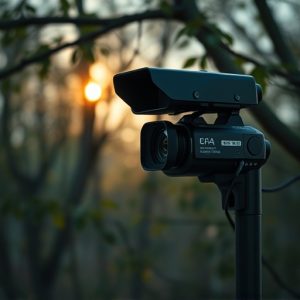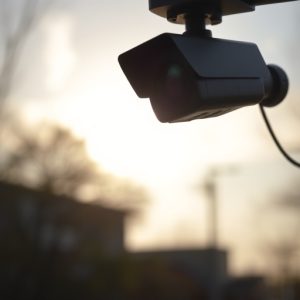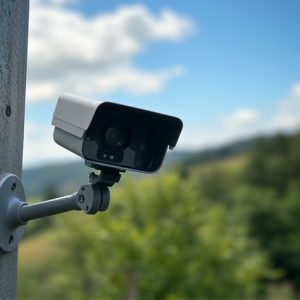Mastering Covert Cameras: Optimal Placement for Enhanced Home Security
Setting up a covert camera network for home security requires balancing technological advancements w…….
Setting up a covert camera network for home security requires balancing technological advancements with legal and ethical considerations. Identify best hidden camera locations in high-risk areas like entry points, valuable assets, and common hiding spots, while adhering to local privacy laws. Strategically place cameras with high-resolution video, infrared capabilities, and motion detection in discreet locations like behind furniture or within everyday objects for comprehensive surveillance without infringing on privacy rights. Regularly review footage and adjust placements for optimal coverage, ensuring a robust security system that proactively monitors high-traffic areas for enhanced safety.
“Uncover the art of enhancing home security with a covert camera network. This comprehensive guide navigates the best practices for installing hidden cameras, addressing legal and ethical considerations that are crucial in today’s digital era. From identifying optimal locations to selecting the right equipment, we delve into discreet placement strategies for maximum security. Discover essential features for choosing top-tier cameras and learn effective monitoring tips for maintaining your secret surveillance system, ensuring peace of mind and optimal home protection.”
- Understanding Legal and Ethical Considerations for Hidden Camera Installation
- Identifying Optimal Hidden Camera Locations in Your Home
- Best Practices for Discreet Camera Placement to Maximize Security
- Choosing the Right Equipment: Essential Features of a Covert Camera Network
- Tips for Effective Monitoring and Maintaining Your Secret Surveillance System
Understanding Legal and Ethical Considerations for Hidden Camera Installation
When considering a covert camera network installation, it’s paramount to grasp the intricate balance between technological advancement and legal, ethical boundaries. The placement of hidden cameras in homes or other private spaces raises important privacy concerns. Homeowners should be aware that capturing images or videos without clear consent can infringe upon personal privacy rights, potentially leading to serious legal repercussions.
Best practices suggest a thorough understanding of local laws regarding surveillance technology. This involves identifying permissible uses for hidden cameras, such as enhancing home security against intrusion or theft. It’s crucial to position cameras in the most strategic best hidden camera locations—areas like entry points, valuable asset sectors, and common areas where activities can be monitored without unduly intruding upon privacy zones. Ethical considerations demand that individuals have no reasonable expectation of privacy in these designated zones.
Identifying Optimal Hidden Camera Locations in Your Home
When it comes to enhancing your home security with a covert camera network, identifying the best hidden camera locations is paramount. Start by assessing high-risk areas like entry points (doors and windows), valuable asset areas (safe rooms or vaults), and common hidden spots (behind large furniture, inside cabinets, or under stairs). These strategic zones provide clear lines of sight while remaining concealed from potential intruders.
Consider the environmental factors as well—natural light, shadows, and obstacles. Position your cameras where they can capture clear, unobstructed views without drawing attention to themselves. Regularly review and adjust these placements based on changes in your home’s layout or security needs, ensuring optimal coverage for your peace of mind.
Best Practices for Discreet Camera Placement to Maximize Security
When setting up a covert camera network, discretion is key. To achieve maximum home security, place cameras in hidden locations that offer clear views while remaining undetected. Best hidden camera locations include areas like corners, behind furniture, or inside everyday objects like light fixtures and smoke detectors. These spots provide unobstructed lines of sight without drawing attention.
Consider the environment and potential blind spots when choosing best hidden camera locations. Cameras positioned near windows or doors can capture entry points, while those in hallways or common areas offer comprehensive surveillance. Regularly review footage to identify any gaps in coverage and adjust camera placement accordingly for a robust home security system.
Choosing the Right Equipment: Essential Features of a Covert Camera Network
When setting up a covert camera network for home security, selecting the right equipment is paramount. The best hidden cameras should offer high-resolution video, infrared capabilities for low-light conditions, and motion detection to ensure optimal coverage. Wireless options provide flexibility in placement but require robust signal strength; while wired systems offer more reliable transmission with lower latency.
Consider best hidden camera locations strategically—in discrete spots that offer clear lines of sight without being readily visible. Common choices include behind mirrors, inside ceiling lights, or beneath furniture. Ensure these cameras are protected from environmental factors like dust and moisture to maintain their functionality over time. Additionally, investing in a robust network switch and secure internet connection is crucial for seamless data transfer and remote access, enhancing the overall effectiveness of your home security system.
Tips for Effective Monitoring and Maintaining Your Secret Surveillance System
To ensure effective monitoring and maintenance of your covert camera network, start by strategically selecting best hidden camera locations that offer optimal visibility while remaining unseen. Focus on high-traffic areas like entry points, valuable asset locations, and potential blind spots. Utilize wall-mounted cameras for a subtle yet comprehensive view, or consider discrete options like ceiling-mounted models or even smart mirrors with built-in sensors. Regularly review footage to ensure the system captures what you need, and adjust camera angles or positions as necessary.
Additionally, maintain your secret surveillance system through consistent updates and checks. Keep firmware up to date for improved performance and security patches. Regularly test connectivity to ensure cameras are streaming smoothly without lag or interruptions. Establish a routine maintenance schedule, including cleaning lenses and ensuring adequate power supply. Proactive monitoring and care will help maximize the effectiveness of your home security by providing clear, reliable footage when it matters most.
When strategically installing a covert camera network, balancing legal and ethical considerations with optimal placement is key to enhancing home security. By understanding the best hidden camera locations within your property and utilizing discreet placement techniques, you can create an effective surveillance system. Choosing the right equipment with essential features allows for seamless monitoring and maintenance, ensuring your peace of mind. Implement these practices to harness the power of covert cameras while adhering to legal boundaries and ethical standards.


